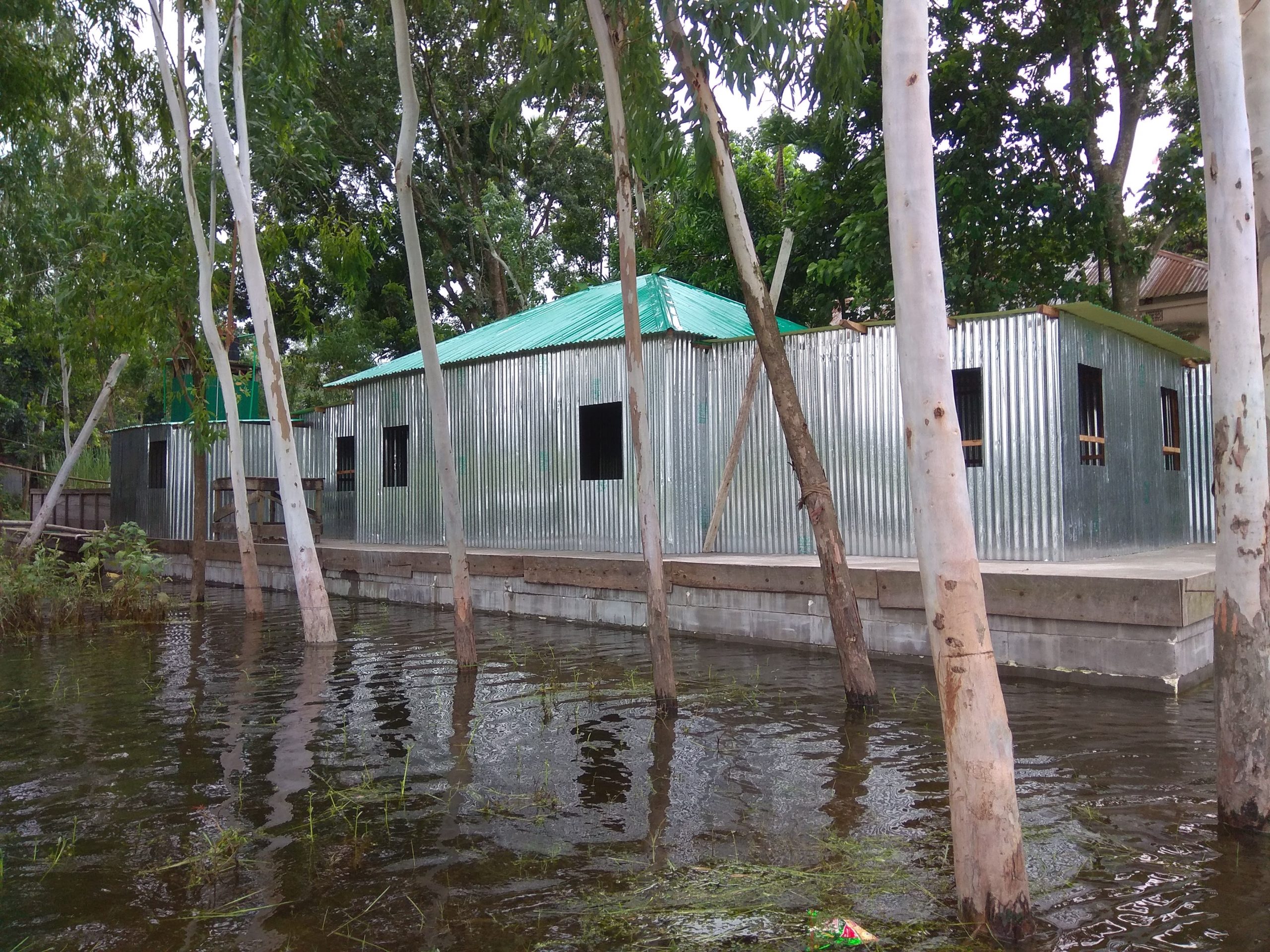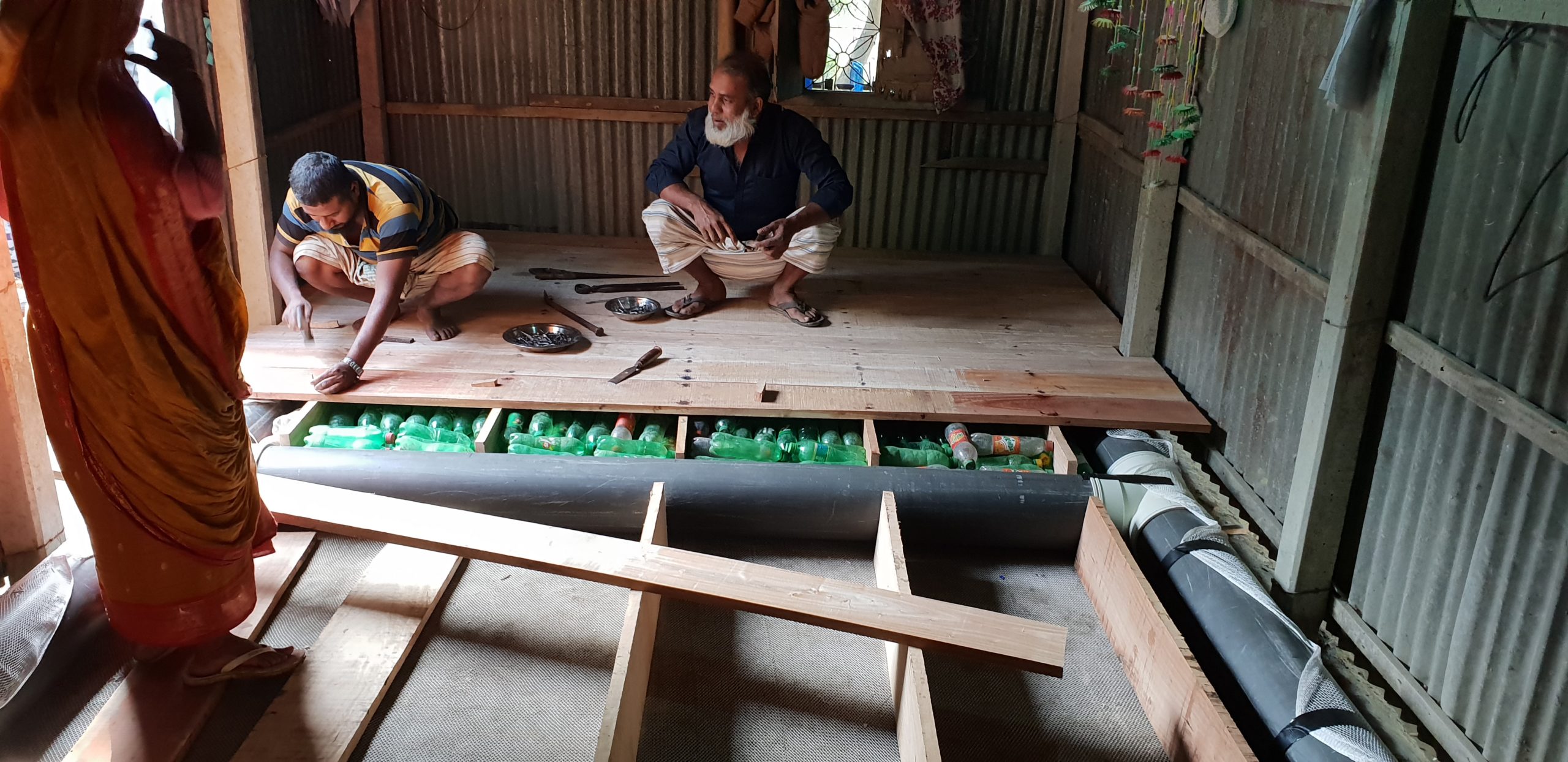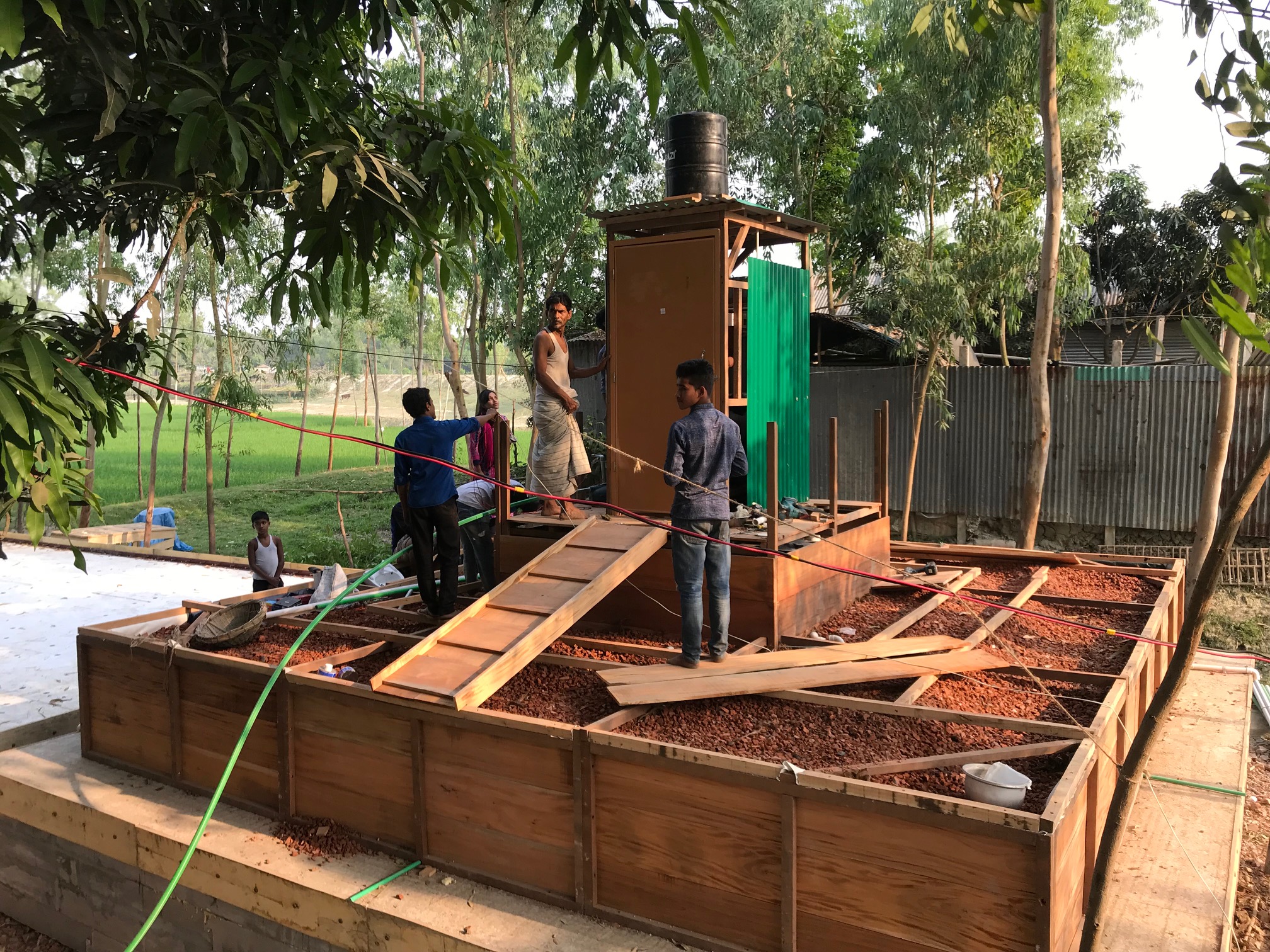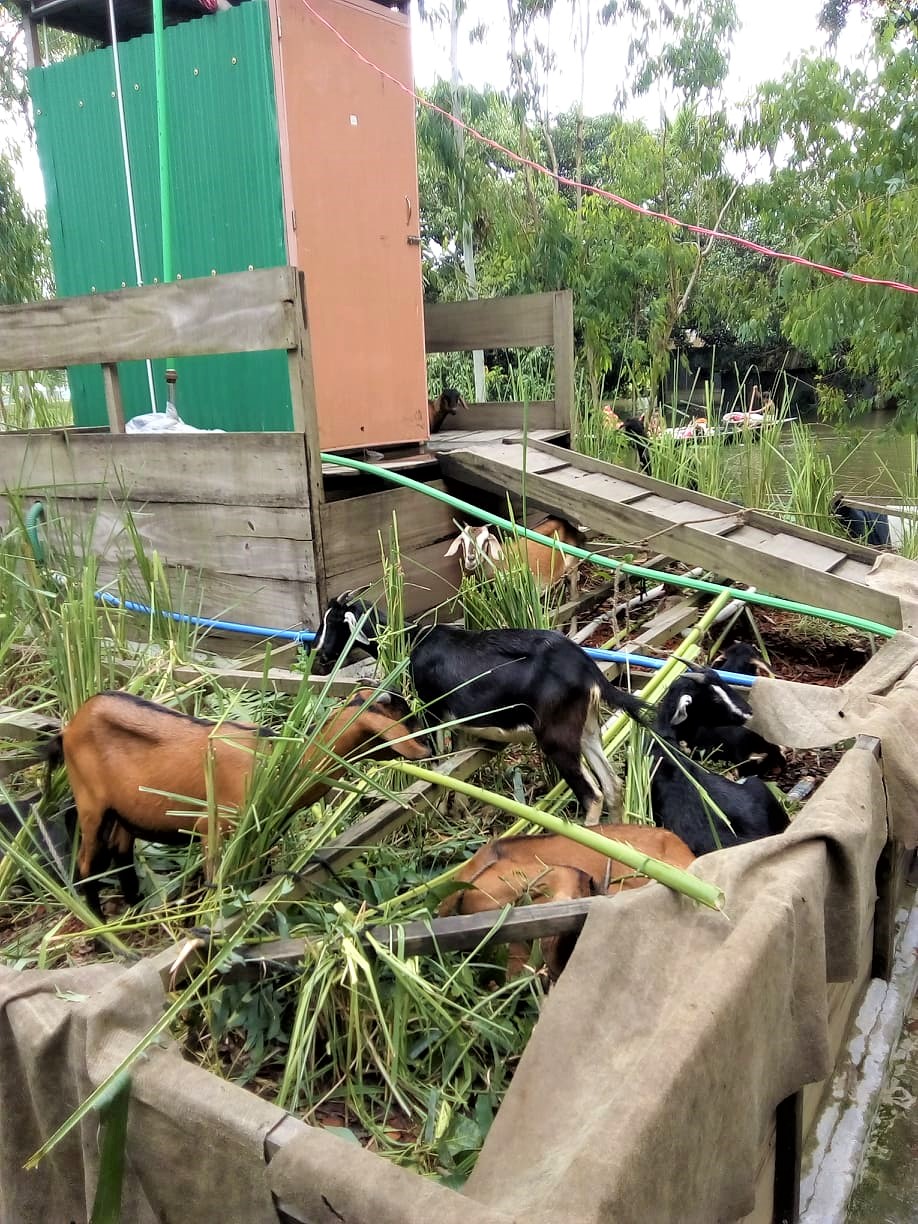Floating houses can dramatically reduce material losses and lost income while providing necessary living and hygienic spaces during flooding season
14 December 2022

The fully amphibious house comprises a low-density foam base with a traditional house constructed on top. It remains livable throughout the flood season but is much more costly than retrofitted floors. Image credit: Zahrun Zannat.
AGU press contact:
Rebecca Dzombak, [email protected] (UTC-5 hours)
Contact information for the researcher:
Zahrun Zannat, Bangladesh University of Technology and Engineering, [email protected], [email protected] (UTC+6 hours)
CHICAGO — Amphibious houses and houses retrofitted with floating floors have the promise to save people in Bangladesh substantial time and money during the monsoon flood months, when they must relocate or risk losing material goods, work equipment and livestock. Homes can be affordably retrofitted with floating floors made from locally available materials, such as plastic bottles and PVC pipes.
But fully amphibious houses, like those in the Netherlands that rise with floodwaters, remain too expensive for many people in Bangladesh, as documented by new research to be presented on Wednesday, 14 December at AGU’s Fall Meeting in Chicago and online. To lower costs, the low-density foam could be made in Bangladesh instead of being imported from the Netherlands, said Zahrun Zannat, a graduate student in urban planning at the Bangladesh University of Technology and Engineering (BUET) who will be presenting the work.
“The retrofitted floor is low cost, it’s inspired by traditional practices, and it’s something the local people can build on their own,” said Zannat. For the amphibious house with the foam base, she found that while the cost is “quite higher,” the long-term financial benefits of not losing possessions, livestock or weaving materials help balance the high up-front cost of building the amphibious house.

The retrofitted floating floor can be made affordably and with local materials, making it an accessible option for people living in flood-prone regions in Bangladesh. Image credit: Zahrun Zannat.
Flood hazards
Zannat’s work is in the Sirajganj District of Bangladesh, about 30 miles (50 kilometers) northwest of Dhaka, the capital city. The Brahmaputra River flows through the district, which is home to over 3 million people, and every monsoon season (June to August) the river floods for three to four months. Over the past several years, floodwaters have reached peaks of around 50 feet (15 meters), typically flooding about two-thirds of the houses in the region.
“The floodwaters are getting more intense day by day, year by year, with climate change issues,” said Zannat.
People who live in the flood zones can either pack up and leave — a costly option not open to everyone — or attempt to stay. Some houses are built on raised beds of soil, clay or concrete, but as flooding intensifies, these are often not raised enough. Those who stay may be forced out of their homes and lose possessions when floodwaters get too high. For weavers who make up a substantial portion of the economy in this area, losing their loom can be devastating.
Hygiene is an additional concern during the flood season, especially for women and people who menstruate and need privacy to safely practice hygiene, Zannat said.
Float on floods
In 2016, Zannat’s institution, Institute of Water and Flood Management at BUET, collaborated with IHE Delft University, Netherlands to retrofit one family’s home with a floating floor, and another was provided with an amphibious house and outhouse. Both families were happy with the units, she said, but for different purposes. The floating floor worked very well for living until the floodwaters got too high, reducing the ceiling height and access to living space. But they were able to keep personal possessions, including a handloom, safe and dry, saving them from significant financial loss.
The amphibious house remained habitable throughout the flood season, and that family was able to keep livestock safe inside, too, Zannat reported. But the whole community benefitted from the floating outhouse.
“When the area is inundated, the women get to have access to a hygienic station that can help reduce skin diseases and other types of disease,” said Zannat. “Having the sanitation unit really helped them.”

Retrofitted sanitation units provide a flood-resistant space for menstruating women to have access to clean spaces. Image credit: Zahrun Zannat.

Areas surrounding floating sanitation units can also protect livestock during floods. Image credit: Zahrun Zannat.
While retrofitting floating floors is relatively accessible, amphibious buildings are expensive because the foam used to construct the floating base is expensive and produced in the Netherlands. Producing the foam in Bangladesh could drastically cut costs and help make amphibious buildings more affordable, Zannat said. Having construction subsidized by local governments could also help.
Even if building whole communities with floating houses is a distant goal, providing communities with floating hygiene buildings and communal shelters could be accomplished more quickly and help many families.
Despite hurdles to increasing access, Zannat is optimistic about bringing this technology to Bangladesh.
“I’m hopeful,” she said. “There are some challenges, but the benefits quite outweigh the negatives. And all these challenges? We can solve them.”
###
AGU is a global community supporting more than half a million advocates and professionals in Earth and space sciences. Through broad and inclusive partnerships, we advance discovery and solution science that accelerate knowledge and create solutions that are ethical, unbiased and respectful of communities and their values. Our programs include serving as a scholarly publisher, convening virtual and in-person events and providing career support. We live our values in everything we do, such as our net zero energy renovated building in Washington, D.C. and our Ethics and Equity Center, which fosters a diverse and inclusive geoscience community to ensure responsible conduct.
Notes for journalists:
Zahrun Zannat will present this research at an online poster at AGU’s Fall Meeting on 14 December. She will be available via Zoom (password: AGU2022) during her poster session. For information about Fall Meeting 2022, including the schedule of press events, visit the online Press Center. Neither the presentation nor this press release is under embargo.
Presentation abstract:
NH35C-0505 Household Level Adaptation Response to Extreme Flood Events
Wednesday, 14 December
2:45 – 6:15 p.m. ET
Online poster session